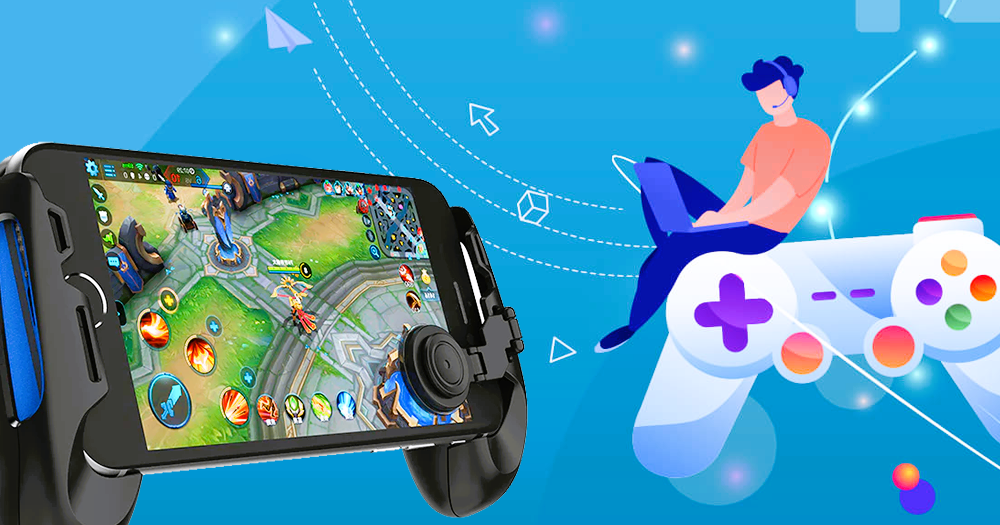The mobile gaming industry has seen explosive growth in recent years, with millions of players worldwide engaging with a wide variety of games on their smartphones and tablets. This boom has not only transformed the way games are developed but also how they are marketed. As we look to the future, understanding effective marketing strategies in the mobile gaming sector is essential for developers and marketers alike. This article explores emerging trends, effective strategies, and key considerations for successful mobile game marketing.
The Current Landscape of Mobile Gaming
Mobile gaming has evolved from simple puzzle games and snake-like mechanics to a diverse ecosystem of immersive experiences, including augmented reality (AR), massively multiplayer online games (MMOs), and intricate story-driven adventures. According to a report by Newzoo, the global mobile gaming market is projected to exceed $100 billion in revenue by 2025, making it a critical segment of the gaming industry.
The rise of mobile gaming can be attributed to several factors:
- Accessibility: Smartphones have become ubiquitous, allowing players to access games anytime and anywhere. This convenience is a significant driver of mobile gaming popularity.
- Diverse Game Genres: From casual games to complex RPGs, the variety of genres available appeals to a broad audience. Mobile games cater to different preferences, ensuring a larger player base.
- Social Connectivity: Many mobile games incorporate social features, allowing players to connect with friends and participate in multiplayer experiences. This social aspect enhances engagement and retention.
Key Trends Shaping Mobile Game Marketing

As the mobile gaming landscape continues to evolve, several trends are emerging that will shape future marketing strategies:
1. Personalization and User Experience
Personalization is no longer just a nice-to-have; it’s an expectation. Players want tailored experiences that resonate with their preferences. Game developers can leverage data analytics and machine learning to understand player behavior, enabling them to deliver personalized content, in-game offers, and marketing messages.
For instance, a player who frequently engages with puzzle games might receive targeted advertisements for new puzzle titles or related content. By creating a more relevant experience, developers can increase player satisfaction and retention.
2. The Role of Influencer Marketing
Influencer marketing has gained traction across various industries, and mobile gaming is no exception. Engaging with popular streamers and content creators can significantly boost a game’s visibility. These influencers have established trust with their audiences, making their endorsements impactful.
To effectively leverage influencer marketing, developers should identify influencers whose content aligns with their game’s target audience. Collaborating with influencers for gameplay videos, live streams, and social media promotions can create buzz around a game and drive downloads. Read about creating viral marketing campaigns, more details in the article about Fall Guys.
3. Augmented Reality and Immersive Experiences
The success of games like Pokémon GO has highlighted the potential of augmented reality (AR) in mobile gaming. AR experiences offer players a unique blend of the virtual and real worlds, enhancing engagement and interactivity.
As AR technology becomes more sophisticated, game developers should explore innovative ways to incorporate it into their marketing strategies. Interactive advertisements, location-based experiences, and AR-powered events can create memorable campaigns that attract new players.
4. Cross-Platform Play and Engagement
Cross-platform play is becoming increasingly important as players seek seamless experiences across devices. Allowing players to access their game progress on mobile, PC, and console fosters a more inclusive gaming environment.
Marketing campaigns that emphasize cross-platform capabilities can attract a wider audience. Highlighting features like shared progression and multiplayer modes can appeal to both mobile and console gamers, broadening a game’s reach.
5. Community Building and Engagement
Building a strong community around a mobile game is crucial for long-term success. Engaging players through social media, forums, and in-game events fosters a sense of belonging and loyalty.
Developers should prioritize community management by actively interacting with players, addressing feedback, and organizing events. Creating opportunities for players to connect, such as tournaments or collaborative challenges, enhances player engagement and retention.
Effective Marketing Strategies for Mobile Games

As developers navigate the mobile gaming landscape, implementing effective marketing strategies is essential for success. Here are several strategies to consider:
1. Leverage App Store Optimization (ASO)
App Store Optimization (ASO) is a crucial component of mobile game marketing. By optimizing app titles, descriptions, and keywords, developers can improve visibility in app stores and increase downloads.
Developers should conduct thorough keyword research to identify terms that potential players are searching for. Utilizing eye-catching visuals, compelling descriptions, and positive user reviews can further enhance an app’s appeal.
2. Incorporate Social Media Marketing
Social media platforms provide a powerful channel for promoting mobile games. Developers should create engaging content that showcases gameplay, behind-the-scenes development, and player testimonials.
Running targeted ads on platforms like Facebook, Instagram, and TikTok can also reach specific demographics. Highlighting user-generated content and encouraging players to share their experiences fosters a sense of community.
3. Utilize Data-Driven Marketing
Data analytics play a vital role in understanding player behavior and optimizing marketing efforts. By analyzing metrics such as user engagement, retention rates, and in-app purchases, developers can refine their strategies.
A/B testing various marketing messages and channels allows developers to identify what resonates best with their audience. This data-driven approach enables continuous improvement and enhances overall marketing effectiveness.
4. Engage in Retargeting Campaigns
Retargeting campaigns are an effective way to re-engage players who may have shown interest but did not complete a download or purchase. By serving targeted ads to these potential players, developers can remind them of the game and encourage them to take action.
Using personalized messaging and showcasing updates or special promotions can increase the likelihood of conversions. Retargeting campaigns help keep the game top-of-mind for potential players.
5. Emphasize Updates and Events
Regular updates and in-game events keep players engaged and excited about the game. Developers should communicate these updates through marketing channels, ensuring players are aware of new content, features, and events.
Promoting limited-time events, exclusive rewards, and seasonal content can incentivize players to return to the game and attract new users.
The future of mobile gaming is bright, with countless opportunities for developers and marketers to innovate and engage players. By embracing emerging trends and implementing effective marketing strategies, mobile games can achieve success in a competitive landscape. As the industry continues to evolve, staying attuned to player preferences and leveraging data-driven insights will be key to unlocking the full potential of mobile gaming.
For further information on game marketing strategies and industry standards, consider exploring resources such as IGN.

